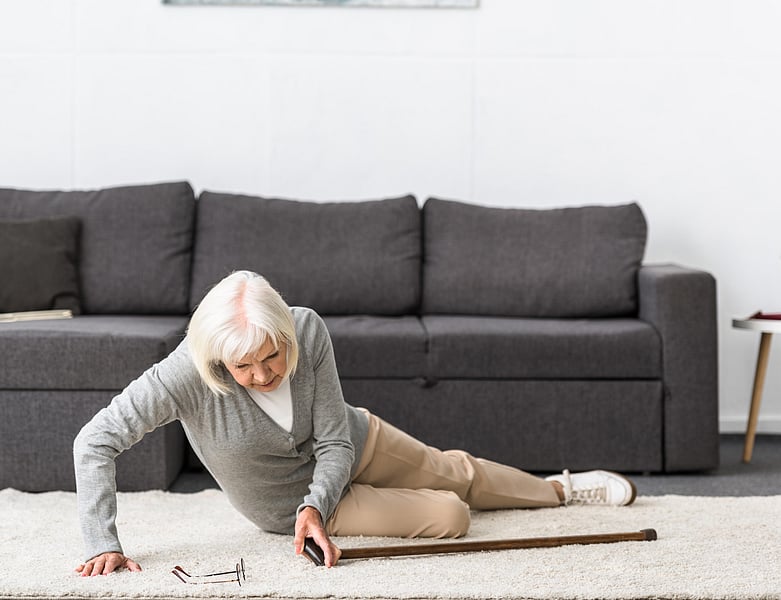Due to a recent change of our website, the process for submitting refill requests online has now changed.
Please click on “Sign Up Today!†to create a new account, and be sure to download our NEW Mobile app!
Thank you for your patience during this transition
Get Healthy!

- Cara Murez
- Posted September 30, 2023
Take These Steps to 'Fall-Proof' Your Home
The risk of falls increases in older age, and along with it, the risk for serious physical or psychological damage, but there are steps people can take to help prevent these accidents.
Each year, about 27% of adults 65 and older fall and about 10% of those are injured.
"If you've experienced a fall or have a fear of falling, you are at a higher risk of falling. Once an older adult falls, they can develop post-fall anxiety syndrome,"said Dr. Angela Catic, associate professor at Baylor College of Medicine's Center on Aging, in Houston.
"It's important for older populations to remain as independent as possible in their own homes. You can help support this by making sure common falling hazards are not in their homes,"Catic added in a college news release.
She offered some tips for improved safety:
- Stay active but avoid exercises and equipment where seniors cannot be in complete control of their environment. This includes treadmills or other heavy machinery.
- Work with a physical therapist to determine what kind of exercise is best suited to the individual.
- Be aware of medications that can cause cognitive impairment.
- Give up slippers and flipflops in favor of shoes with traction.
- Make sure lighting is adequate both in and outside the house.
- Make sure paths inside the home and to bedrooms and living spaces are clutter-free, especially if your loved one uses a cane or walker. Remove rugs, which increase the risk of slipping even with fasteners such as Velcro or tape.
- Do not keep extension cords in the walking path. Tuck them around or under furniture.
- Make sure carpeted rooms have no loose or uneven patches, which also can increase the risk of tripping.
Even decorating and storage choices can make a big difference. Catic suggests coloring steps in contrasting shades to help older adults see where the step lands, especially if they have a visual impairment.
In the kitchen and bathroom:
- Make everything accessible and at eye level. Move items from high shelves to a lower shelf. If a step stool is needed, it should be one with a bar attached for stability. "Some older adults are prone to falling after standing for long periods of time, and this can happen while cooking," Catic said. "Using a high stool that lets them sit can be helpful."
- Install grab bars near the shower or tub and by the toilet to help an older person navigate around the space. Note: Towel racks are not substitutes for grab bars because they are not designed to hold a significant amount of weight.
- Place slip-resistant aids in the bathtub or shower. If the tub requires an individual to step over the lip to get in, consider purchasing a sliding tub transfer bench. These benches can also be useful for seated showers if an older adult cannot stand for long periods of time.
- Consider buying raised toilet seats with attached arms if your or your loved one has mobility issues.
And don't overlook outdoor spaces, which can provide great respite. Remember that:
- Seniors should always wear shoes if they are outdoors.
- If they are walking across yards or unstable sidewalks, an assistive device such as a cane or rolling walker can be a good idea. Any porch or patio should be well-maintained to prevent falls.
- Have a walker for older adults who enjoy gardening that allows them to sit without bending down all the way to the ground. Get immediate attention for any falls if your loved one hits their head, is on blood thinners or loses consciousness. If pain persists after a fall, see a doctor.
"These tips are great for geriatric populations, but they aren't the only population at a high risk for falling,"Catic said. "People with cognitive impairment, dementia, arthritis, orthostatic hypertension or even neuropathy also can experience a fall."
More information
The U.S. National Institute on Aging has more on falls and fractures in older adults.
SOURCE: Baylor College of Medicine, news release, Sept. 28, 2023
